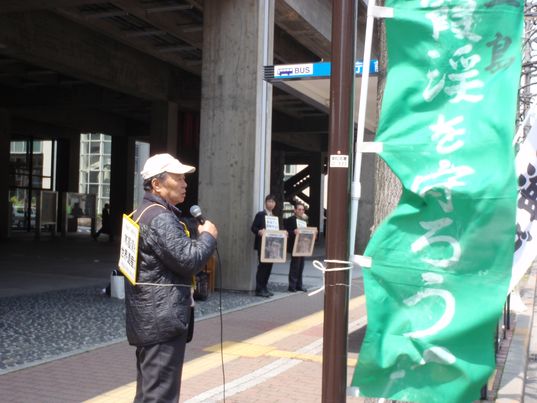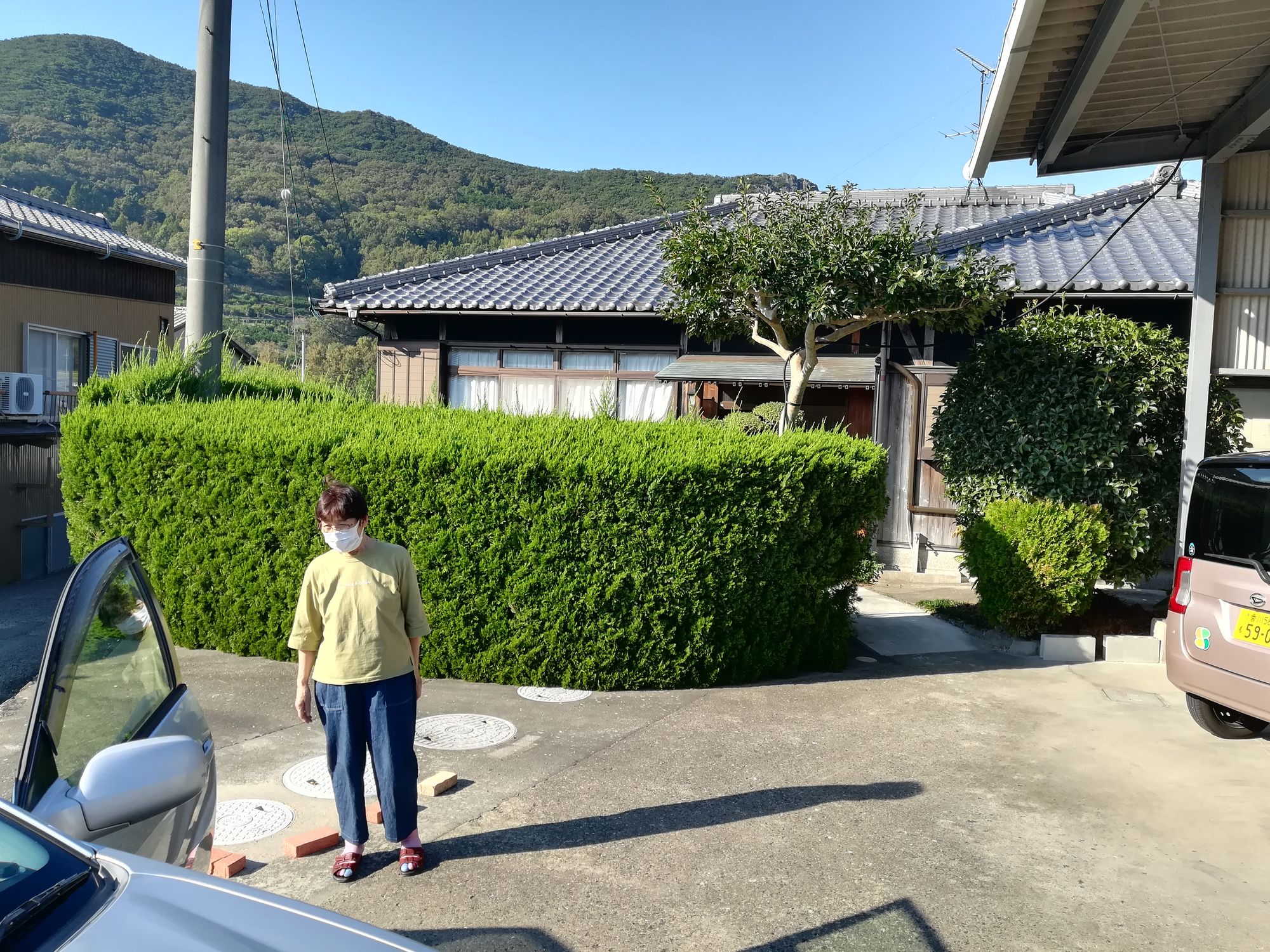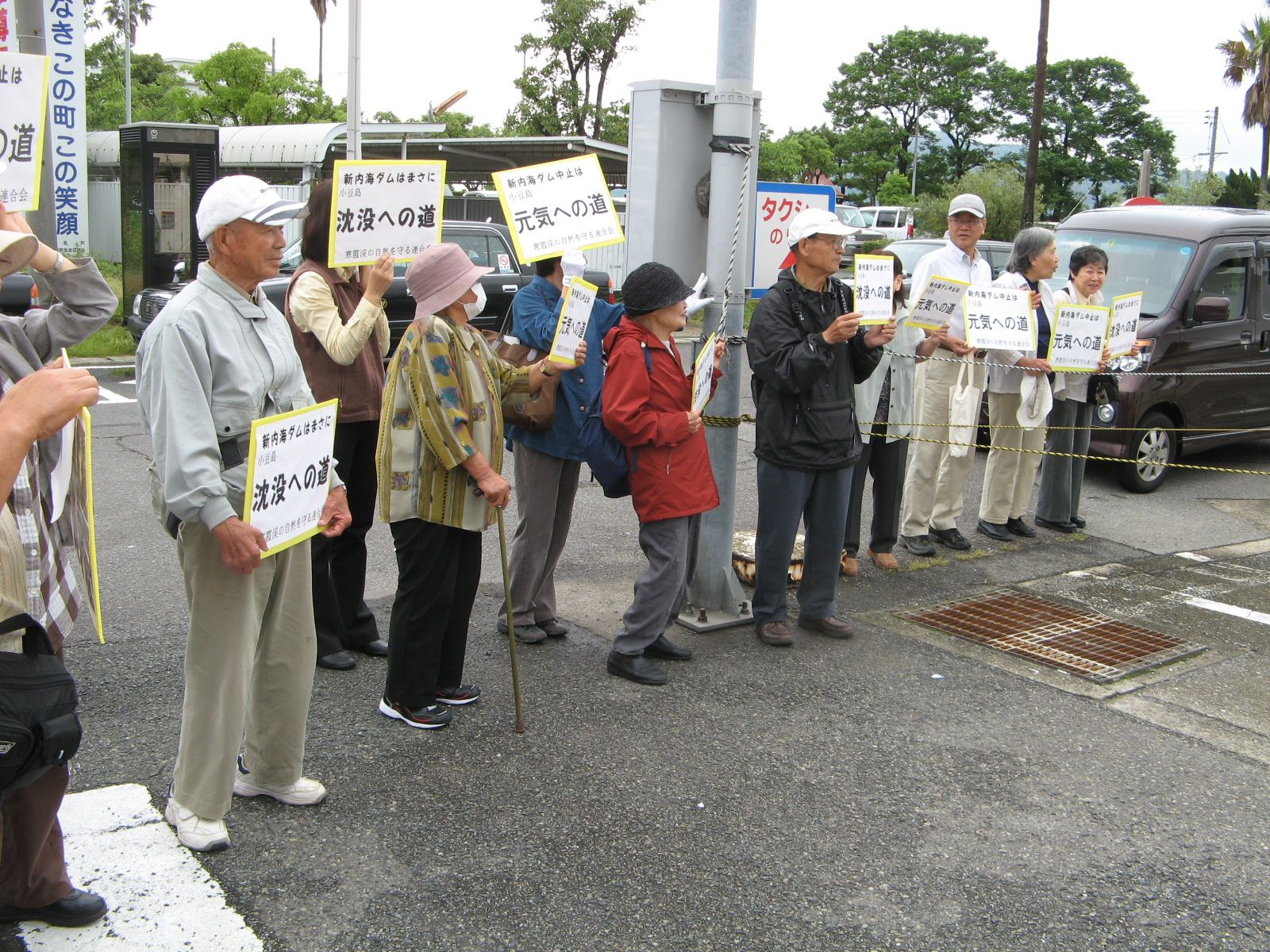A History of Anti-Dam Resistance in Shōdoshima, as Told by Elder Activists

On 21 September 2022, CEMiPoS Executive Director Hiroshi Maruyama and Researcher Olivia Doyle arrived in Shōdoshima, Kagawa Prefecture, to document the resistance of a local community against the New Uchinomi Dam project. According to three activists who helped found and lead the resistance movement, the New Uchinomi Dam was constructed to meet the short term fiscal demands of political agents who did not live in Shōdoshima, rather than to address any lasting needs of the region’s residents. As a result, the Dam has produced short term economic stimulation and political gain for those government officials who commissioned it, yet left local peoples to face lasting consequences to their landscapes, their health, and their community cohesion. Kiyoko Nakai, Tsuneko Tomita and Yukio Saeki explained why the discrepancy between government objectives and community demands came about, and how they have advocated for their community despite administrative intimidation.

Shortly after we arrived, we met with Kiyoko Nakai. Now in her eighties, Nakai was a member of the original Anti-Dam Resistance Coalition (Uchinomi Damu Saikaihatsu to Kokuritsukōen Kankakei no Shizen wo Kangaeru Kai). She shared some of the efforts she has undertaken with other activists between the 2000s and 2010s.

Nakai brought us to the Uchinomi Dam bridge to recount her experiences. Walking up to the Dam, we were immediately struck by how massive it was relative to the small amount of water it retained. Rainfall was minimal in Shōdoshima this year, meaning that the dam reservoir’s water level did not rise enough to flow beyond the dam and cycle in new water. When we visited, the water level was low and the water appeared dirty and stagnant. Tomita would later explain that the concrete used to build the dam leeches chemicals into the water, and that without proper outflow, the water’s Chemical Oxygen Demand (COD) levels were also rising. Each year, the water retained by the dam is tested for pH and other qualities that indicate the health of the water and surrounding environment. The tests have shown that, over time, the pH of the retained water has risen due to contact with the concrete and lack of outflow. Combined, these conditions make the water inhospitable to most wildlife and ill-suited to use in the home. Therefore, Kagawa prefecture has to send the retained water to another dam via a conduit, purifying it for tap water.
Given the poor condition of the reservoir water, and given the environmental detriment it seems to cause, we asked Nakai and Tomita how the Uchinomi Dam was serving the community. Both of them responded plainly: it wasn’t. The Dam was proposed not as a needed resource for the community, but as a short-term economic stimulus that would primarily benefit the government officials and contractors who constructed it.
The next day, we met with both Nakai and Tomita to discuss the history of the Dam’s construction and protest against it. Tomita is a biologist, activist, and resident of Shōdoshima. She explained that, initially, many community members were either on the fence or decidedly against the construction of the Dam, and their hesitancy increased once local politicians started to meet with contractors, prefectural administrators, and national officials without consulting their constituencies.
Dam planning and anti-dam protest spanned three, from the 1980s to the 2010s. In the 1980s, a member of the Kagawa Prefectural Assembly from Liberal and Democratic Party (LDP) in conspiracy with the local contractors in his constituency put pressure on the prefectural administrators at the public works committee to build the New Uchinomi Dam to prevent water shortages and flooding. In the 1990s, the prefectural administrators announced that Kagawa prefecture was designing a plan to build the New Uchinomi Dam, in an attempt to approach the Ministry of Construction, (the predecessor of the Ministry of Land, Infrastructure, Transport and Tourism until 2001). In November 1996, the prefectural administrator asserted at the public works committee that the Kagawa Prefecture applied to the Ministry of Construction for building the New Uchinomi Dam. In December 1996, the Uchinomi Town Assembly held a committee meeting ad hoc to build the New Uchinomi Dam, discussing how to persuade dissents in the community downstream from the dam. In October 1999, the prefectural administrator made it clear that the New Uchinomi Dam would be six times larger than the old Uchinomi Dam it was to replace. In June 2001, Kagawa Prefecture officially announced its plan to replace the Uchinomi Dam with the New Uchinomi Dam on Bettoh River, leading to the organisation of the anti-dam resistance coalition by some local people. In September 2001, they petitioned the governor of Kagawa Prefecture to postpone the redevelopment plan with 1223 signatures. Their arguments had three bases: First, the construction of the Dam would spoil the natural landscape of Kankakei; second, the large size of the Dam would threaten the local people who live downstream; third, there was no need to construct the large dam in terms of water use and flood control. To sum, the decision making process demonstrates that local people concerned were excluded from the decisions affecting them. It is inconsistent with the River Act, revised in 1997, which requires river authorities to reflect local people’s opinions on their plan to develop or maintain rivers.
Kagawa Prefecture did not listen to those dissidents, creating a fait accompli by collecting signatures to approve the construction of the New Uchinomi Dam from house to house in cooperation with neighbourhood associations concerned. In June 2008, Kagawa Prefecture held a public hearing to apply to the Minister of Land, Infrastructure, Transport and Tourism for certifying its plan to build the New Uchinomi Dam. Although there was a burst of severe criticism of the plan by local people, the Ministry of Land, Infrastructure, Transport and Tourism certified the redevelopment plan in February 2009, taking the step of issuing a compulsory purchase order on the land owned by dissidents in November 2010. The Anti-Dam Resistance Coalition promptly filed a suit seeking revocation of the certification of the redevelopment plan against the Japanese authorities concerned, including Kagawa Prefecture and the Ministry of Land, Infrastructure, Transport and Tourism, shortly after the certification. The Takamatsu District Court overlooked the delayed submissions from those authorities, rejecting the petition from the Campaign in March 2014. Meanwhile, the redevelopment plan was completed. In court, several experts, including Hiroshi Maruyama, testified in vain that the redevelopment should be revocated. Bearing in mind that many of the Coalition members were in their 80s and 90s, leader Katsuaki Yamanishi ultimately decided not to appeal the ruling.
Tomita and Nakai told us that many landowners of the reservoir and its surroundings were convinced to abandon their lands for a one-time compensation, offered by the prefectural government and the Ministry of Construction. Though the majority accepted the payment, only two landowners who were core members of the Anti-Dam Coalition continued to resist, even after the New Uchinomi Dam was built.
Before departing the island, Nakai joined us to consult with Saeki Yukie, former secretary to the Socialist Party of Japan and a fellow anti-dam activist. Saeki and his comrades undertook two main forms of resistance against the dam. First, for a total of ten years, he and other members of the Anti-Dam Coalition protested outside of the Kagawa Prefectural government office in Takamatsu once a month. They handed out flyers and spread messages over bullhorns about the detriment that the unnecessary dam would cause. In the meantime, the Coalition felt empowered to challenge the dam’s construction against a backdrop of the Democratic Party of Japan (DPJ) taking the majority against the LDP in 2009 at the national election. The new Minister of Land, Infrastructure, Transport and Tourism pledged to cancel the Shōdoshima Redevelopment Plan, which supported infrastructural development and industrial stimulation akin to the dam construction and industrial waste use, but destroyed local ecosystems, local communities and landscapes, and forced the majority of local people to accept the Plan by developing roads and building a gorgeous community centre. Nonetheless, the DPJ lost the majority in the Diet in 2012, resulting in the reemergence of the New Uchinomi Dam.

Saeki and Nakai share lasting regrets that they didn’t file an appeal to continue their resistance in court. Lacking an appeal and living with the fully constructed dam as he and other activists enter old age, Saeki lamented that he and his comrades cannot finish their own movement with a successful outcome. This dam has engendered not only tangible detriment to its surrounding residential landscape and environment, but also immeasurable psychological and emotional detriment to community members like Saeki. The government’s failure to recognize and respect the voices of its constituents produces political, economic, or overarching social conflicts, yet it also damages the dignity, self image, and spirit of individuals whose voices are constantly shut out. Their own government has violated their dignity by ignoring, even fighting against, their voices which represent their self-determined needs and desires. Nevertheless, Saeki enjoyed his time in the movement and does not regret the dedication and resources he put forth.
Today, we can carry on Saeki, Tomita, and Nakai’s legacies by learning about Shōdoshima’s history of activism, and about the harm that this activism sought to prevent which we must now address. The Dam, built to produce short-term profit for government institutions, now poses imminent danger to local residents.
Through protest and litigation, the coalition insisted that government officials were not interested in preserving Shōdoshima residents’ lifestyles, community bonds, or wellbeing. Instead, they and their collaborators were interested in short-term economic stimulation that would facilitate their own political advancement. Publicly, the Dam is purported to control flooding and supply water. According to Nakai, Tomita, and Maruyama, these contributions are public-facing narratives which shroud the primary motivations behind the project.
In the activists’ view, the Ministry of Land, Infrastructure, Transport, and Tourism, alongside the prefectural and municipal administrators in Kawaga, commissioned the dam solely to benefit their respective government agencies. In order to receive public funding, ministries propose budgets that would generate revenue for the national government. Prefectural and local politicians similarly propose spending plans that would maintain or improve the local economy, as a means to gain the majority vote each election cycle. Rather than a necessary safety provision or environmental protection measure, the dam was primarily designed to generate revenue by creating jobs and patronizing private contractors. Tomita additionally speculates that the dam was constructed using industrial waste fuels imported from nearby Teshima, which is administratively part of Shōdoshima. If her suspicions are true, the dam’s construction would have also stimulated Teshima’s only major industry, and by association, Shōdoshima’s economy.
Profit incentive for sustained public benefit can be a legitimate reason for a government to approve infrastructural development. However, the New Uchinomiya Dam’s profit has not been sustained, and little of that profit has filtered down to the Shōdoshima residents most directly impacted by the project. The dam is not producing hydroelectric power for the island, nor is it creating permanent jobs beyond construction, nor is its polluted water being used for agriculture or household consumption before intensive cleaning treatment. Any profit produced was a temporary display of economic stimulation for national ministers and local politicians to gain fiscal support and reelection.
While the dam has produced some temporary gain for government officials who largely live outside of Shōdoshima, it is now posing real dangers to their constituents living on the island. When the dam was being constructed, contractors dug out soil to create a reservoir and piled it elsewhere the valley. That soil is unstable and not bound by any roots or rocks, and Tomita fears that a landslide from the soil mound is highly likely. If that soil falls, it will inundate surrounding plants, animals, and possibly buildings or people. If the detriment of the dam eventually includes the loss of human lives, Tomita plans to demand that the municipality and prefectural government take responsibility. So far, she has demanded that the local governments take action to either prevent a landslide, or to make sure people have an escape plan if one does occur. As of yet, the area around the dam has not received a disaster response plan from the government.
Mayumi Nabetani, a member of the Shōdoshima Town Assembly from the Communist Party of Japan, summarized the local government’s corrupted priorities thusly: After joining the local assembly in 1991, she wanted to put pressure on the local prefectural govt officials - most of whom don’t live in or have relationships with Shodōshima - to recognize that the profitability of the dam could not outweigh the environmental and social detriment it would cause locally. Ultimately, the prefectural officials’ approval of the dam was not informed by the local people who would be most impacted by it.
